Following my
tests of ten JBL LE26 tweeters, here's
are a minor study on single pairs of LE20-1 and LE25
tweeters. LE20-1 is the LE20 minus grille.
Vintage JBL LE20-1
A pair of mint condition
LE20-1 was bought on eBay. These are the early
alnico versions of cone tweeters from James. B.
Lancing. "Much sought after!" as the
saying usually goes on eBay. Well, we'll see if
the LE20 tweeters can live up to this..
Beautifully made they are with the die cast frame
holding the diaphragm. Removing the frame exposes
the voice coil and three small felt pads glued to
the frame and diaphragm, possibly to control
resonances or help keeping the voice coil
centered in the magnet gap. Some corrosion to the
pole pieces, but nothing that disturbs the voice
coil from moving freely, so I left it there.
|
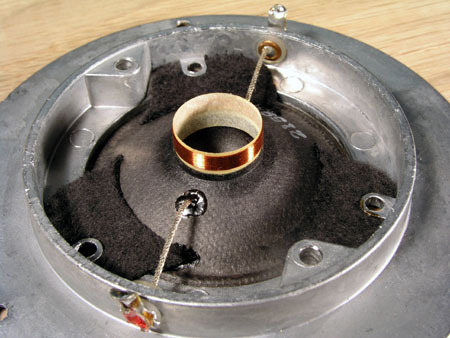 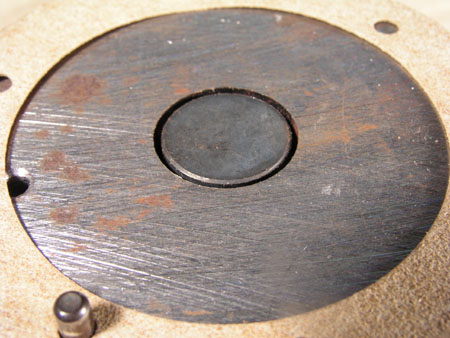
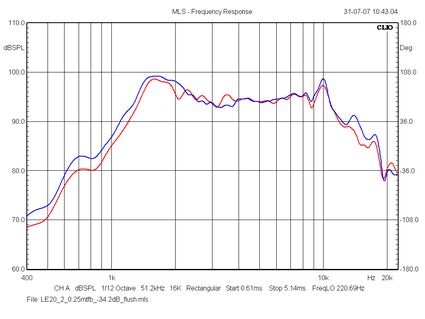 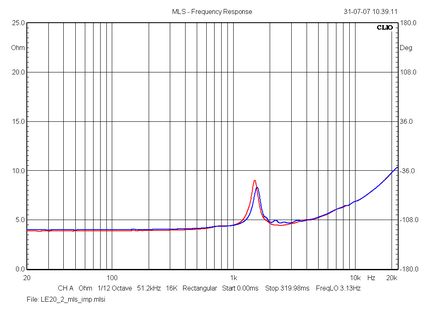
Left: SPL measured at
0.25 m distance and normalised for 1 meter/2.8V.
The LE20-1 has a minor peak at 10 kHz and
declines rapidly above this frequency.
Right: Impedance of the two tweeters. Fs = ~1600
Hz due to rather rigid paper suspension.
|
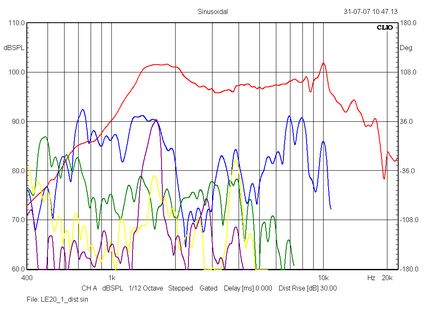 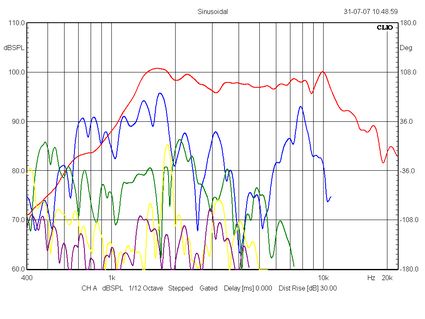
Left: LE20-1 sample 1
distortion test at a level equal to a 90 dB sound
level at 1 meter distance. Distortion level is
rised by 30 dB.
Right: Sample 2, same conditions as sample 1.
Compared to LE25 and LE26 these older versions
display significant levels of 2nd harmonic
distortion.
|
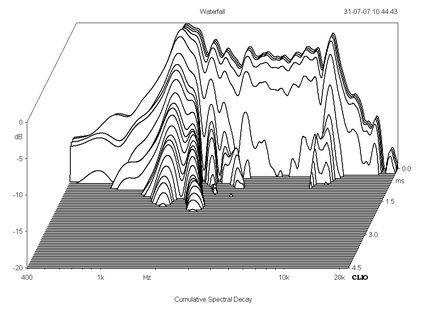 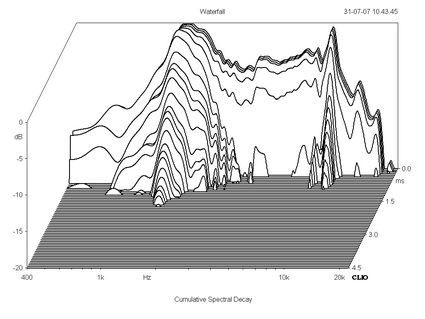
Left: LE20-1 sample 1,
cumulative spectral decay displaying decent
performance at ~2-9 kHz. The peak at ~10 kHz is
noticeable, but seen worse.
Right: LE20-1 sample 2, same condition as sample
1.
If used above 3 kHz, these tweeters have a fairly
clean decay.
|
Conclusion
The LE20 tweeters may
need a supertweeter by modern standards due to
limited response in upper octave. Sensitivity is
quite high around 95 dB/2.8 V. Generally I would
pick a LE26 tweeter over the LE20, providing
extended response in upper and lower octaves. I
haven't tried setting up the LE20 in any 2- or
3-way systems but I would expect them to be
useful from 3 kHz despite high 2nd harmonic
distortion.
|
Vintage JBL LE25
These JBL LE25 tweeters are from my L26 Decade
speakers.
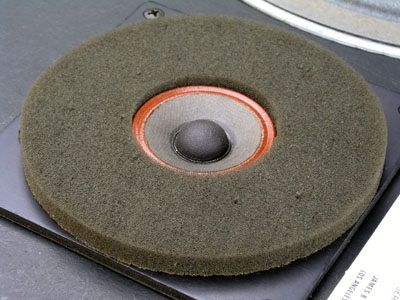
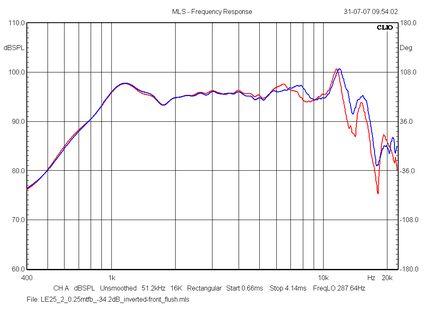 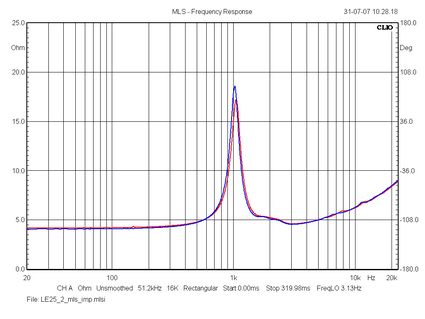
Left: SPL from samples 1
and 2 normalised for 1 meter/2.8 V input.
Right: Impedance of sample 1 and 2. The LE25s
have softer suspensions compared to the LE26 and
possibly slightly lower moving mass as the Fs
appear to be the same as LE26.
|
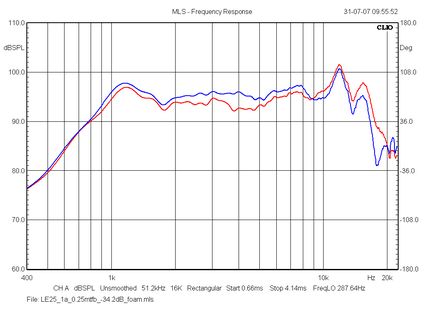 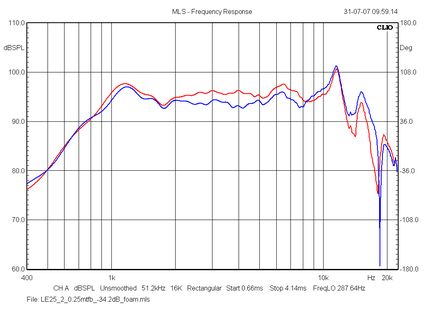
Left: Sample 1 with foam
on faceplate (red) and with inverted LE26
faceplate (blue).
Right: Sample 2 with foam on faceplate (blue) and
with inverted LE26 faceplate (red).
Sorry for swapping colors.
The LE25 appear to be sligtly more sensitive
compared to the LE26. The lower impedance (4
ohms) may account for the increased sensitivity.
The LE25s do well up to 16-17 kHz but are quite
peaky at 13 and 16 kHz, which shows up on CSD as
well.
|
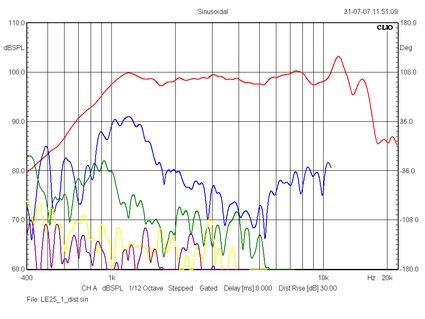 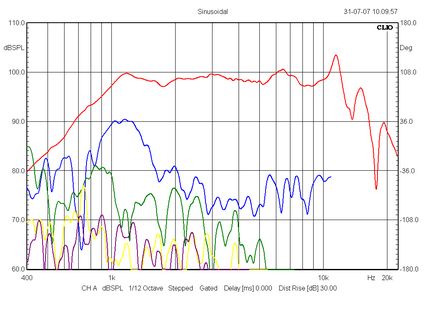
Left: Distortion
measurement of sample 1 equivalent to 90 dB at 1
meter distance.
Right: Distortion measurement of sample 2
equivalent to 90 dB at 1 meter distance.
As can be seen these LE25s perform much better
than the LE20s. Quite a difference.
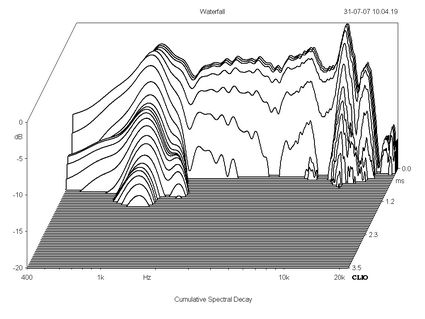 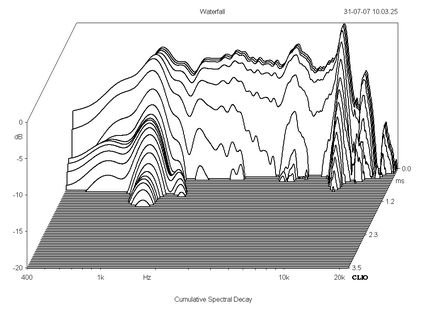
Left: Cumulative spectral
decay of sample 1.
Right: Cumulative spectral decay of sample 2.
I've had the L26-3-ways running for a
considerable length of time and do not find the
13 kHz peak noticeable. Peaks always look awful
on CSD graphs and they may be 5 dB above average
level but appear to die out fast.
|
|